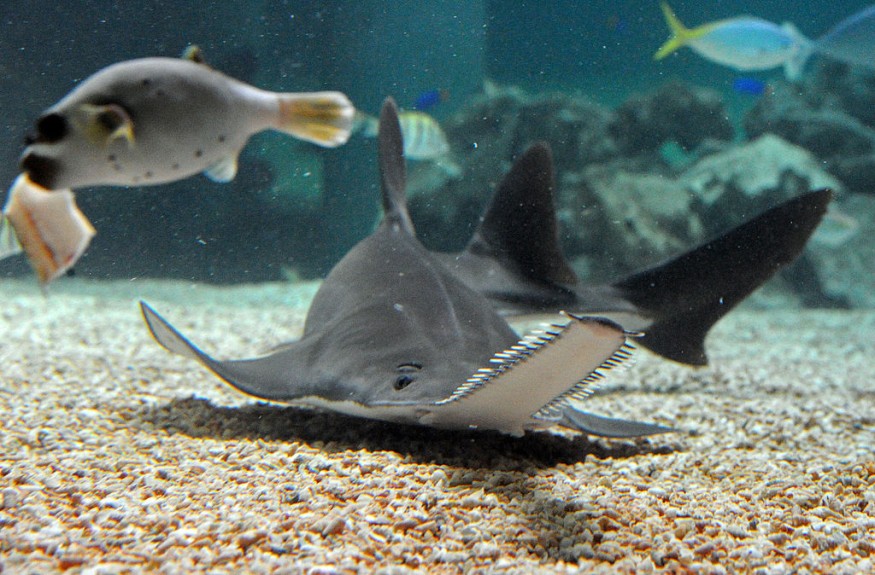A huge sawfish in distress was rescued by wildlife officials in the Florida Keys, a crucial move to save the species as their death toll continues to rise.
The 11-foot (3.3-meter) smalltooth sawfish was spotted swimming in circles near Cudjoe Key and reported to the Florida Fish and Wildlife Conservation Commission, officials said.
Animal Rescue

It was loaded onto a specially specialized transport trailer and delivered to Mote Marine Laboratory in Sarasota, where it is being rehabilitated.
This unusual animal rescue is part of an "emergency response" led by the National Oceanic and Atmospheric Administration (NOAA) and Florida wildlife officials to address an unprecedented die-off of sawfish, a shark and ray-related species that has existed largely unchanged for millions of years.
It is an endangered species that lives in the coastal seas of the southeastern United States and South America. It is distinguished by its long, flattened snout and serrated teeth that resemble a saw, hence the popular name.
"It's important to note that active rescue and rehabilitation are not always effective in saving stranded animals. However, it can still give us critical information to learn about the nature of the distress," said Adam Brame, sawfish recovery coordinator for NOAA.
Despite their intimidating appearance, smalltooth sawfish pose minimal harm to humans. They typically feed on small fish and crustaceans, utilizing their distinctive rostra to stun victims.
However, their populations have plummeted due to habitat degradation, overfishing, and accidental capture in fishing gear; conservation initiatives are currently ongoing to safeguard surviving populations and restore their habitats.
Unusual Behavior Of Sawfish
In Florida, there have been reports of unusual behavior, such as fish spinning or whirling in the water. Other fish species appear to have been harmed, although officials have yet to pinpoint the cause.
Since January, at least 38 endangered sawfish in Florida have died. The seriousness of the crisis has sparked a coordinated effort among state agencies, research institutes, and concerned citizens. With over 400 reports flooding the fish kill hotline and over 200 samples gathered, the severity of the issue is obvious.
Sawfish necropsies found no pathogens or bacterial illnesses, nor were there any issues with low water oxygen levels or toxins like pesticides or hazardous red tide. Water testing is ongoing.
Another likely potential reason is climate change, which caused Florida seas to overheat last summer, resulting in coral bleaching and the mortality of other marine species. Even this year, the seas are abnormally warm.
Officials say it is more difficult to rehabilitate a sawfish than an air-breathing marine creature like a dolphin or manatee.
"We are hopeful this rescue and rehabilitation of an adult smalltooth sawfish will bring us one step closer to understanding the cause of this event," said Gil McRae, Director of FWC's Fish and Wildlife Research Institute.
The Florida Legislature has committed up to $2 million to solve the situation, but the majority of that money will not be accessible until the summer.
Related Article:
© 2025 NatureWorldNews.com All rights reserved. Do not reproduce without permission.





